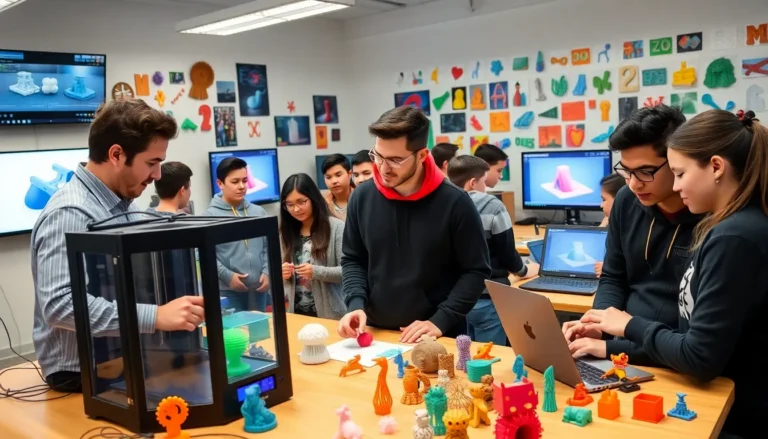Table of Contents
ToggleBubble coding is turning heads in the tech world, and for a good reason. Imagine programming like filling in a coloring book, no complex syntax, no endless debugging. Instead, you just drag and drop your way to a fully functional application. Sounds like a dream, right? Well, it’s not magic: it’s bubble coding. In this text, we’re diving deep into bubble coding, from its origins to its practical applications, all while keeping the tone lively and engaging. Buckle up, because this is going to be an exciting ride.
What Is Bubble Coding?

Bubble coding refers to a visual programming methodology that allows users to create applications without requiring extensive knowledge of traditional coding languages. At its core, bubble coding simplifies the complexities of coding. Users can build functional web applications by using intuitive graphical interfaces, facilitating tasks by simply dragging and dropping elements. The aim is to make programming accessible to everyone, regardless of technical background.
In essence, bubble coding empowers users to focus on creative designs and ideas rather than getting bogged down by code syntax. This method has drastically changed how startups and individuals approach application development, allowing them to prototype and launch projects rapidly.
The History of Bubble Coding
The roots of bubble coding can be traced back to the emergence of visual programming environments in the 1980s. Early pioneers aimed to create tools that would make programming easier for non-programmers. Fast forward to the introduction of tools like Visual Basic, which offered a more intuitive way of interacting with code.
But, it was only when companies like Bubble launched in the early 2010s that bubble coding truly gained traction. These platforms allowed users to design applications visually, without writing a single line of code. The concept has evolved rapidly, and today, numerous tools exist to empower users to create software across various industries.
How Bubble Coding Works
Understanding how bubble coding functions involves familiarizing oneself with its core components. Most bubble coding platforms feature a drag-and-drop interface where users can select pre-built elements such as buttons, text boxes, and images. Once these elements are placed onto a canvas, users can customize their properties and behaviors through intuitive menus.
Behind the scenes, the platform converts these graphical representations into functional code. This abstraction layer allows users to create complex workflows and logic without needing to interact with the underlying programming language. Also, many bubble coding tools come with built-in databases and integrations, making it easier to manage data and connect with other services.
Benefits of Bubble Coding
Bubble coding offers a myriad of advantages, particularly for those looking to create applications without a programming background. Here are some key benefits:
- Accessibility: Individuals untrained in coding can comfortably create applications.
- Speed: Rapid prototyping enables faster development cycles. Users can iterate on their projects quickly based on feedback.
- Cost-Effective: With reduced dependence on developers, businesses can save significantly on development costs.
- Flexibility: Users can make changes without needing extensive technical know-how. Whether it’s tweaking design elements or adding new features, bubbles offer a straightforward way to adapt applications.
Applications of Bubble Coding
Bubble coding has found its place in numerous fields and industries. Here’s a glimpse at where it shines:
- Startups: Entrepreneurs use bubble coding for MVP (Minimum Viable Product) development, allowing them to test ideas without heavy investment.
- Education: Schools and platforms have incorporated bubble coding to teach children the basics of programming naturally.
- E-commerce: Businesses can quickly set up online stores using bubble coding tools that help product listings and checkouts.
- Services: Service-based industries develop applications for appointment scheduling, client management, and more without traditional coding knowledge.
Getting Started with Bubble Coding
Diving into bubble coding can be a rewarding experience. Here’s how one can get started:
- Choose a platform: Research different bubble coding tools available like Bubble, Adalo, and Thunkable. Each comes with its unique features and learning curves.
- Engage with tutorials: Most platforms offer tutorials and resources to assist beginners. Watching video tutorials or reading guides can aid in grasping the basics quickly.
- Create a simple project: Start small by replicating a simple application. This can offer hands-on experience and confidence to explore more complex features.
- Join communities: Engaging with fellow bubble coders through forums or social media groups can lead to valuable insights and support.
- Experiment: Encourage creativity. Test out different features and workflows, and don’t be afraid to think outside the box.
Best Practices for Bubble Coding
To maximize the potential of bubble coding, users should consider the following best practices:
- Plan before you build: Outline ideas and functionalities before jumping into design. This will streamline the creation process.
- Use templates: Many platforms provide templates. Starting with these can reduce the time needed to build applications from scratch.
- Test regularly: Frequent testing helps in identifying bugs and ensures that the application performs as expected under various scenarios.
- Seek feedback: Don’t shy away from asking for feedback from potential users. This can provide insights that may not have been previously considered.







